Thomas Lewis Caine
Era: World War I
Military Branch: Army
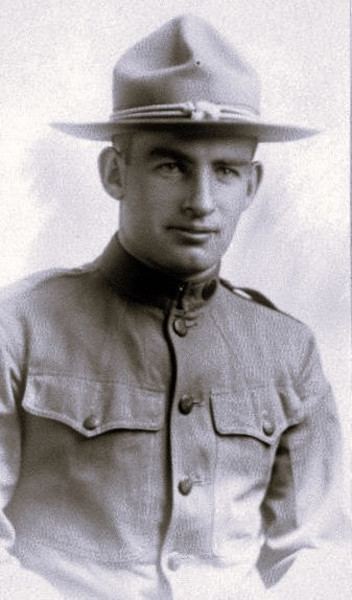
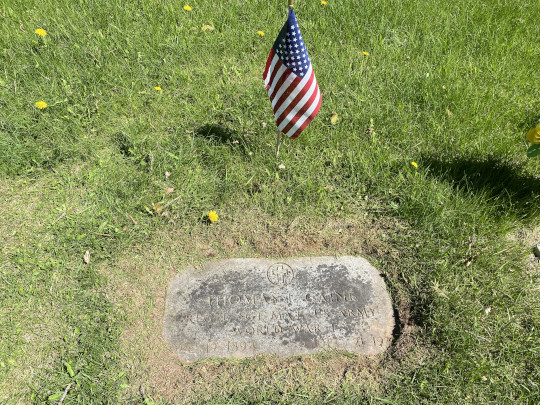
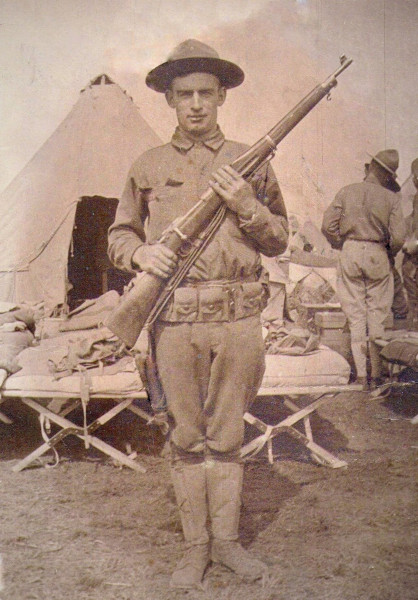
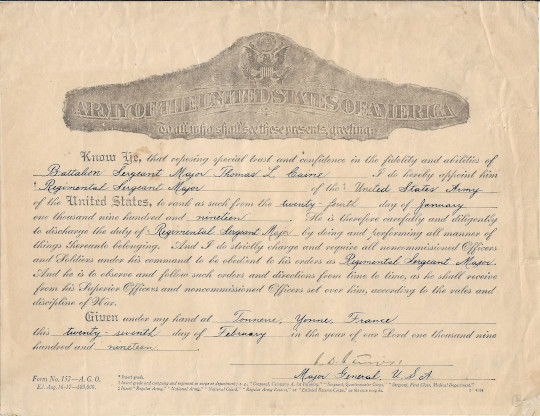
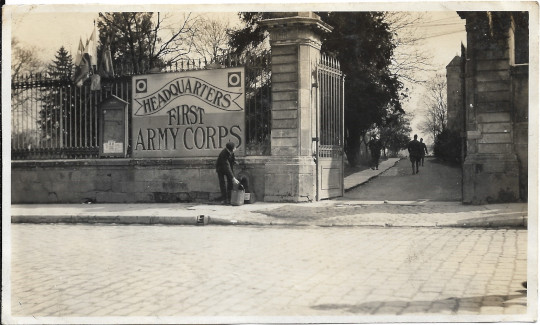
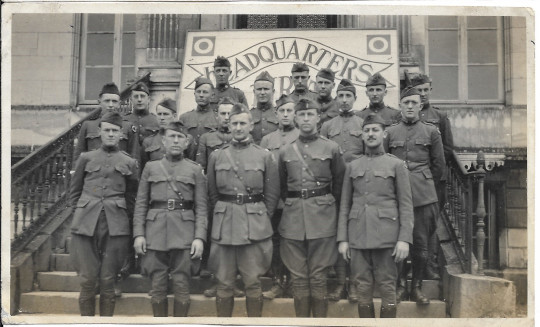
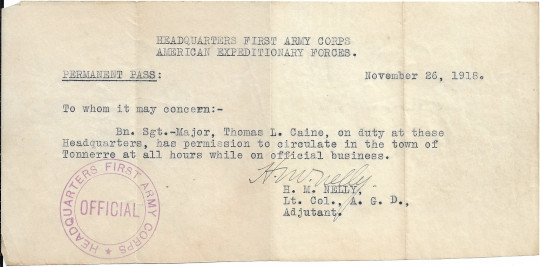
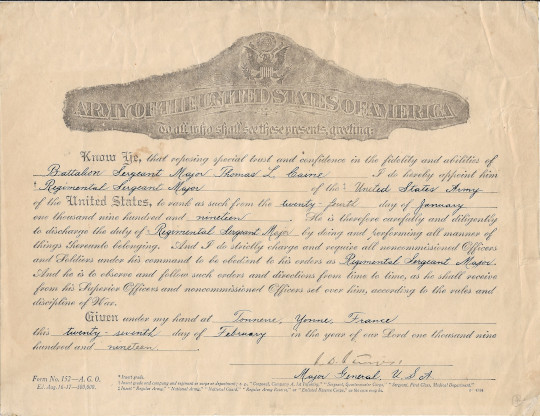
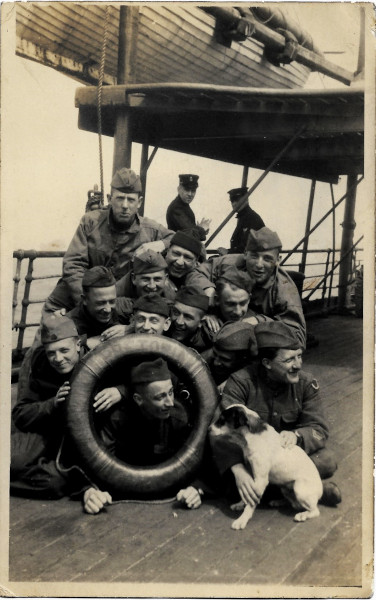
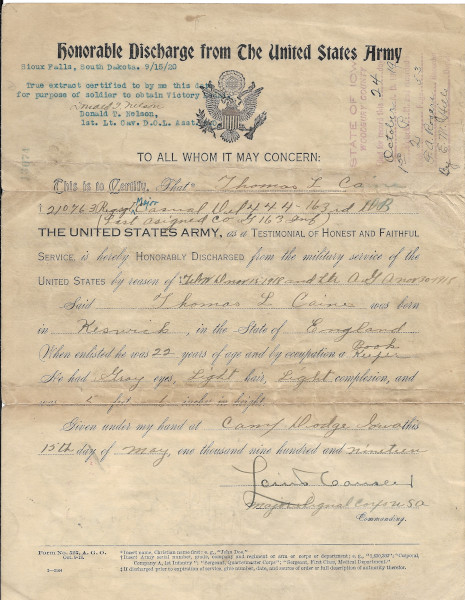
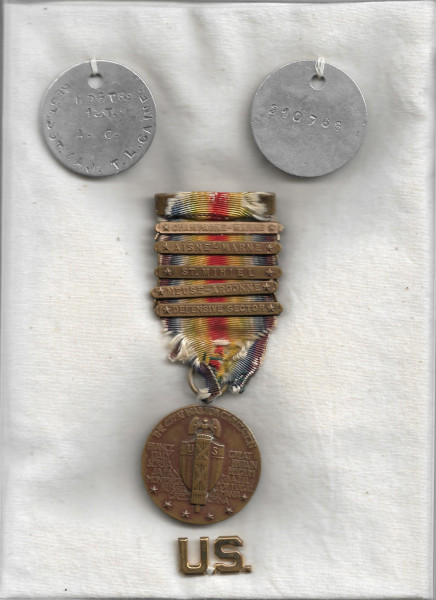
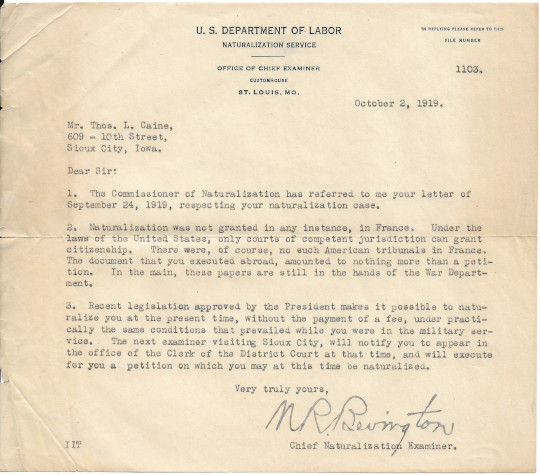
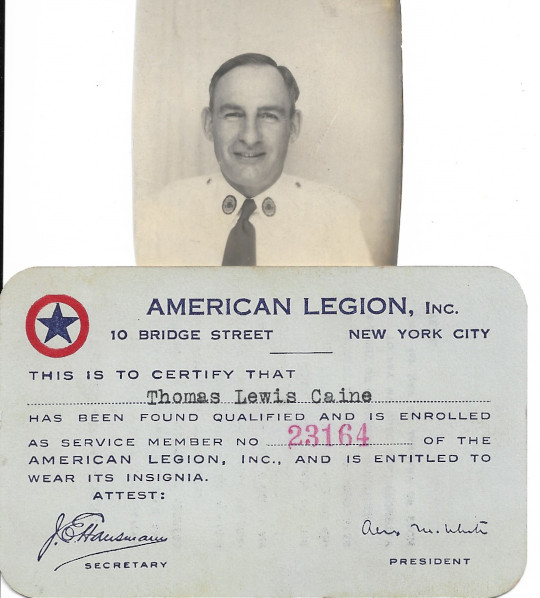
CAINE-Thomas Lewis
World War I Service of Regimental Sergeant Major Thomas Lewis Caine
Regimental Sergeant Major Thomas Lewis Caine died in 1974 at the age of 80 and was interred next to his wife of 35 years, Edna, at Forest Hill Cemetery (see photo). He had been a 38-year resident of the Duluth area.
Thomas, “Tom,” served during World War I in the First Army Corps U. S. American Expeditionary Forces before becoming a citizen of the United States (as many other men). He was born in Keswick, England on December 19, 1894, and had immigrated with his family to Iowa in 1905.
In 1915, Tom completed one semester at Morningside College in Sioux City and was working in Marshall, Minnesota on a farm that he and his brother owned when Woodrow Wilson asked congress to send U.S. troops to the European theatre of war. April 2, 1917. Five days later, on April 7, Tom enlisted in the Iowa National Guard (see photo).
That July, Private Caine served with the Iowa National Guard on the construction of Camp Dodge in Johnston, Iowa, a U.S. army training facility. On August 20 the Iowa National Guard was drafted into Federal service; they became the Headquarters Company 168th Infantry 84th Brigade 42nd Division, also known as the Rainbow Division (see photo).
In November Tom’s unit was staged for departure to Europe at Camp Mills, Long Island, NY, where he contracted the measles. His company left for Europe while Tom was recuperating in the hospital in New York. Following his illness, Tom was able to depart from Hoboken, NJ aboard the USS Mercury, on January 4, 1918. He was 23 years old.
He arrived in France on February 7, 1918. On March 7 he was transferred to the 1st Provisional Co., 163rd Infantry, S.D. 63, part 18, Headquarters Depot Division. On May 1 he was promoted to Corporal.
On May 31, 1918, he was in Neuf chateau, Vosges, France. His battalion participated in the following offensives:
Champagne Marne Defensive, July 15 – 18
Aisne Marne Offensive, July 18 – August 6
St. Mihiel Offensive, September 12 – 26
Meuse Argonne Offensive, September 31 – November 11
On September 21, during the St. Mihiel Offensive, Corporal Thomas L. Caine was promoted to Battalion Sergeant Major, First Army Corps (see photo). Then during the Meuse Argonne Offensive, Sergeant Major Caine received injuries from gas warfare.
A couple of months later, Tom and his fellow staff NCOs wrote the first (and possibly the only) issue of “The Frontline,” a newsletter published at “Headquarters First Amy Corps U. S. American Expeditionary Forces, somewhere in France, 6 November 1981.” It was intended to be sent stateside and was addressed to “Dear Sweetheart, Mother, Father, Sister, Brother, Uncle, Aunt, Cousin or Friend.” Each of the four men were introduced to the readers, here is an excerpt of Tom’s intro:
…And here we present you with Battalion Sergeant Major THOMAS LONGFELLOW CAINE. He claims a membership in the Iowa National Guard, notwithstanding which he first saw the light of day in dear old Blighty. Well, he may be English, but he possesses none of the characteristics of that people – that is, if all this dope we hear about Englishmen catching onto a joke weeks after it is sprung may be believed. For Tommy sure can see a joke – we admit it. He also knows how to tell one – a virtue well worth mentioning. He came to us last March as a buck private, and so – if you know what his present rank in the Army is – it will be unnecessary to for us to dwell on his aptitude and downright brilliancy.
Tommy holds the fort in the filing section of the Adjutant’s Office. He knows every paper in that file too – and as there are beaucoup papers you may mark it he has some memory. Just let him once get his paws on a document and you can be reasonably sure no one will henceforth set eyes on it again. He doesn’t know much of the language of this fair country, pays but little attention to anything feminine, doesn’t smoke and doesn’t drink – and says that when he gets back to L’Amerique he’s going to make a living by teaching others to “pass the buck” – what more could one…(bottom of page cut off).
It is our duty to Tommy and to the world to tell you that his old outfit, the Steenth Regiment of the Steenth Division, has (in Tommy’s opinion) no superior in France. He himself would be with it today, were it not for the fact that, not having had the measles at the proper period in his young life, he felt it his bounden duty to become afflicted with them before embarking. Therefore he placed himself in a New York hospital, while his outfit was on the billowy billows enroute to France. Those measles changed Tommy’s entire military career. He escaped from the hospital and stowed away on what he thought was a cattle boat, until several days out at sea when the boat officers discovered a time bomb placed near the ammunition stores. Tommy came forth and ordered the boat back to New York, as he opined there might be other “bums” aboard. Back in the harbor of the metropolis, he slipped away from the ammunition boat and got a regular passage on a regular troop ship, equipped with all the regular modern inconveniences of troop ships, and thus he made his debut into Sunny France – the land of perpetual rain.
Later in the newsetter…
…The hotel accommodations here deserve a word of mention. Messrs. Harop and Byrne have the gray room of the mezzanine floor, with northern exposure to bullets, whereas the less fortunate M. Elmer has to climb two pair of stairs to the attic, while the Hon. Caine reposes fearlessly and well on the top of four filing cabinets…”
The armistice was signed in France on November 11, 1918.
On November 19, Sergeant Major Caine was in Tonnerre, France; on November 26 at Camp Wheeler. On January 25 he was listed with the “Senior Non-Commissioned Officers Mess at Headquarters First Army Corps, American Expeditionary Forces, Tonnerre, Yonne, France” with 21 other men (see photo).
On February 27, 1919, he was promoted to Battalion Sergeant Major to the Regimental Sergeant Major (see photo).During February of 1919 he was permitted to take leave and went to England to visit his extended family and birthplace.
On April 17, Tom departed for the U.S. from Brest, France on the ship, Pretoria, (see photo) and arrived in Boston on April 28. On May 5 he was transferred to the 2nd 151st Depot Brigade, Camp Devons, MA. and subsequently was discharged on May 15 in Camp Dodge, Iowa (see photo). He returned to life as a farmer on his brother, Art’s, farm, now in Willmar, MN.
After the United States entered WW1, Congress passed the Naturalization Act of May 9, 1918, to expedite naturalization for noncitizen members of the U.S. armed forces. Congress wanted to reward foreign-born service members and encourage immigrant enlistments. On October 2, 1919, 5 months following his discharge, Mr. Thos. L. Caine of Sioux City, Iowa, received a letter from the U.S. Department of Labor Naturalization Service stating that he could not be naturalized as a U. S. citizen in France because “only courts of competent jurisdiction can grant citizenship.” And that “recent legislation approved by the President makes it possible to naturalize you at the present time” (see photo).
Tom moved to Sioux Falls, SD and opened his own business in 1920. On October 28, 1921, Thomas signed up for enlistment and passed the examination for admittance to Battery D, 147th field artillery of the American Legion in Sioux Falls, South Dakota. He joined the American Legion.
He married Edna Nelson in 1923 and they had one son, Vernon Lee “Tommy” Caine in 1924. In 1936 they moved to Duluth, MN, likely for the air quality. Tom suffered from chronic asthma conditions following the war. In 1936-37 he had an extended stay at the Minnesota Veterans Hospital in Minneapolis.
Tom joined the Post 28 David Wisted – Zenith City American Legion (see photo), Tom was a member of the American Legion for 53 years.

